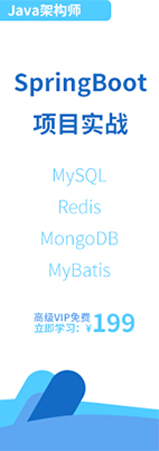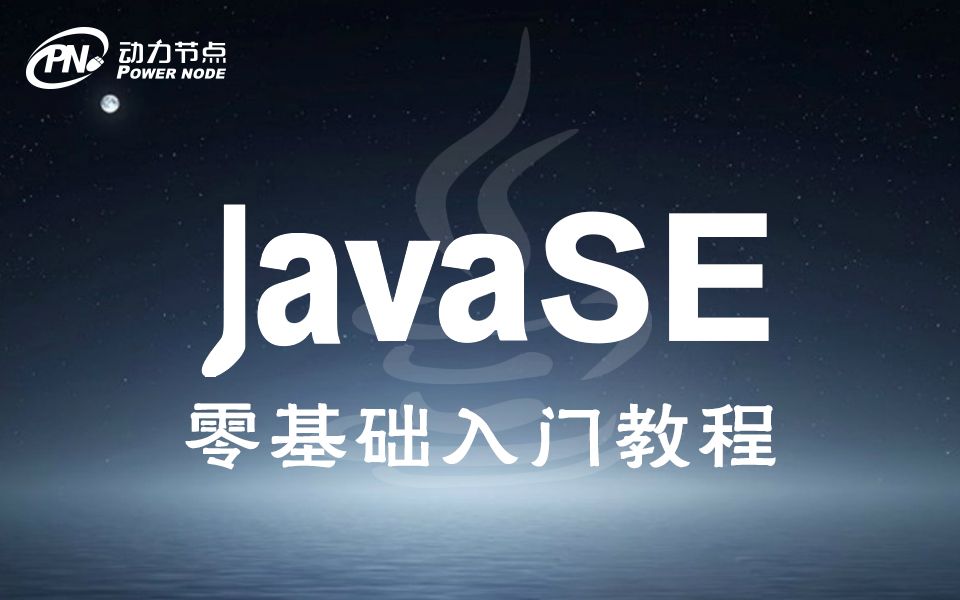- Servlet教程
- Servlet簡介
- Servlet是什么
- Servlet環境設置
- Servlet生命周期
- Servlet實例
- Java Servlet獲取form表單數據
- Servlet客戶端HTTP請求
- Servlet服務器HTTP響應
- Servlet HTTP狀態碼
- Servlet過濾器
- Servlet異常處理機制
- Servlet Cookies處理
- Servlet Session跟蹤
- Servlet context對象
- Servlet訪問數據庫
- Servlet文件上傳
- Servlet獲取日期
- Servlet點擊計數器
- Servlet自動刷新頁面
- Servlet發送電子郵件
- Servlet包
- Servlet調試
- Servlet國際化
- Servlet容器
- Servlet和jsp的區別
- Servlet常用接口和類
- 第一個Servlet程序
- Servlet配置虛擬路徑映射
- ServletConfig對象
- Servlet處理用戶請求的完整流程
- HttpServletRequest詳解
- Servlet請求轉發RequestDispatcher接口
- HttpServletResponse詳解:封裝HTTP響應消息
- Servlet頁面重定向
- Java Servlet的request/response中文亂碼問題
- Java Servlet Filter過濾器概述
- Filter過濾Servlet的過程
- Java Servlet Filter映射
- Servlet FilterChain過濾器鏈
- Servlet中FilterConfig接口及其使用方法
- Servlet Filter實現全站統一編碼,解決中文亂碼問題
- Servlet事件監聽器
- Servlet HttpSessionListener監聽器統計網站在線人數
Servlet Cookies處理
Cookies 是存儲在客戶端計算機上的文本文件,并保留了各種跟蹤信息。Java Servlet 顯然支持 HTTP Cookies。
識別返回用戶包括三個步驟:
• 服務器腳本向瀏覽器發送一組 Cookies。例如:姓名、年齡或識別號碼等。
• 瀏覽器將這些信息存儲在本地計算機上,以備將來使用。
• 當下一次瀏覽器向 Web 服務器發送任何請求時,瀏覽器會把這些 Cookies 信息發送到服務器,服務器將使用這些信息來識別用戶。
本章將向您講解如何設置或重置 Cookies,如何訪問它們,以及如何將它們刪除。
Servlet Cookie 處理需要對中文進行編碼與解碼,方法如下:
String str = java.net.URLEncoder.encode("中文"); //編碼
String str = java.net.URLDecoder.decode("編碼后的字符串"); // 解碼
Cookie 剖析
Cookies 通常設置在 HTTP 頭信息中(雖然 JavaScript 也可以直接在瀏覽器上設置一個 Cookie)。設置 Cookie 的 Servlet 會發送如下的頭信息:
HTTP/1.1 200 OK
Date: Fri, 04 Feb 2000 21:03:38 GMT
Server: Apache/1.3.9 (UNIX) PHP/4.0b3
Set-Cookie: name=xyz; expires=Friday, 04-Feb-07 22:03:38 GMT;
path=/; domain=bjpowernode.com
Connection: close
Content-Type: text/html
正如您所看到的,Set-Cookie 頭包含了一個名稱值對、一個 GMT 日期、一個路徑和一個域。名稱和值會被 URL 編碼。expires 字段是一個指令,告訴瀏覽器在給定的時間和日期之后"忘記"該 Cookie。
如果瀏覽器被配置為存儲 Cookies,它將會保留此信息直到到期日期。如果用戶的瀏覽器指向任何匹配該 Cookie 的路徑和域的頁面,它會重新發送 Cookie 到服務器。瀏覽器的頭信息可能如下所示:
GET / HTTP/1.0
Connection: Keep-Alive
User-Agent: Mozilla/4.6 (X11; I; Linux 2.2.6-15apmac ppc)
Host: zink.demon.co.uk:1126
Accept: image/gif, */*
Accept-Encoding: gzip
Accept-Language: en
Accept-Charset: iso-8859-1,*,utf-8
Cookie: name=xyz
Servlet 就能夠通過請求方法 request.getCookies() 訪問 Cookie,該方法將返回一個 Cookie 對象的數組。
Servlet Cookies 方法
以下是在 Servlet 中操作 Cookies 時可使用的有用的方法列表。
|
序號 |
方法 & 描述 |
|---|---|
| 1 |
public void setDomain(String pattern) 該方法設置 cookie 適用的域,例如 bjpowernode.com。 |
| 2 |
public String getDomain() 該方法獲取 cookie 適用的域,例如 bjpowernode.com。 |
| 3 |
public void setMaxAge(int expiry) 該方法設置 cookie 過期的時間(以秒為單位)。如果不這樣設置,cookie 只會在當前 session 會話中持續有效。 |
| 4 |
public int getMaxAge() 該方法返回 cookie 的最大生存周期(以秒為單位),默認情況下,-1 表示 cookie 將持續下去,直到瀏覽器關閉。 |
| 5 |
public String getName() 該方法返回 cookie 的名稱。名稱在創建后不能改變。 |
| 6 |
public void setValue(String newValue) 該方法設置與 cookie 關聯的值。 |
| 7 |
public String getValue() 該方法獲取與 cookie 關聯的值。 |
| 8 |
public void setPath(String uri) 該方法設置 cookie 適用的路徑。如果您不指定路徑,與當前頁面相同目錄下的(包括子目錄下的)所有 URL 都會返回 cookie。 |
| 9 |
public String getPath() 該方法獲取 cookie 適用的路徑。 |
| 10 |
public void setSecure(boolean flag) 該方法設置布爾值,表示 cookie 是否應該只在加密的(即 SSL)連接上發送。 |
| 11 |
public void setComment(String purpose) 該方法規定了描述 cookie 目的的注釋。該注釋在瀏覽器向用戶呈現 cookie 時非常有用。 |
| 12 |
public String getComment() 該方法返回了描述 cookie 目的的注釋,如果 cookie 沒有注釋則返回 null。 |
通過 Servlet 設置 Cookies
通過 Servlet 設置 Cookies 包括三個步驟:
1. 創建一個 Cookie 對象:您可以調用帶有 cookie 名稱和 cookie 值的 Cookie 構造函數,cookie 名稱和 cookie 值都是字符串。
Cookie cookie = new Cookie("key","value");
請記住,無論是名字還是值,都不應該包含空格或以下任何字符:
[ ] ( ) = , " / ? @ : ;
2.設置最大生存周期:您可以使用 setMaxAge 方法來指定 cookie 能夠保持有效的時間(以秒為單位)。下面將設置一個最長有效期為 24 小時的 cookie。
cookie.setMaxAge(60*60*24);
3. 發送 Cookie 到 HTTP 響應頭:您可以使用 response.addCookie 來添加 HTTP 響應頭中的 Cookies,如下所示:
response.addCookie(cookie);
實例
讓我們修改我們的 表單數據實例,為名字和姓氏設置 Cookies。
// 導入必需的 java 庫
import java.io.*;
import javax.servlet.*;
import javax.servlet.http.*;
// 擴展 HttpServlet 類
public class HelloForm extends HttpServlet {
public void doGet(HttpServletRequest request,
HttpServletResponse response)
throws ServletException, IOException
{
// 為名字和姓氏創建 Cookies
Cookie firstName = new Cookie("first_name",
request.getParameter("first_name"));
Cookie lastName = new Cookie("last_name",
request.getParameter("last_name"));
// 為兩個 Cookies 設置過期日期為 24 小時后
firstName.setMaxAge(60*60*24);
lastName.setMaxAge(60*60*24);
// 在響應頭中添加兩個 Cookies
response.addCookie( firstName );
response.addCookie( lastName );
// 設置響應內容類型
response.setContentType("text/html");
PrintWriter out = response.getWriter();
String title = "設置 Cookies 實例";
String docType =
"<!doctype html public \"-//bjpowernode//dtd html 4.0 " + "transitional//en\">\n";
out.println(docType +
"<html>\n" +
"<head><title>" + title + "</title></head>\n" +
"<body bgcolor=\"#f0f0f0\">\n" +
"<h1 align=\"center\">" + title + "</h1>\n" +
"<ul>\n" +
" <li><b>名字</b>:"
+ request.getParameter("first_name") + "\n" +
" <li><b>姓氏</b>:"
+ request.getParameter("last_name") + "\n" +
"</ul>\n" +
"</body></html>");
}
}
編譯上面的 Servlet HelloForm,并在 web.xml 文件中創建適當的條目,最后嘗試下面的 HTML 頁面來調用 Servlet。
<html>
<body>
<form action="HelloForm" method="GET">
名字:<input type="text" name="first_name">
<br />
姓氏:<input type="text" name="last_name" />
<input type="submit" value="提交" />
</form>
</body>
</html>
保存上面的 HTML 內容到文件 hello.htm 中,并把它放在 <Tomcat-installation-directory> /webapps/ROOT 目錄中。當您訪問 http://localhost:8080/Hello.htm 時,上面表單的實際輸出如下所示:

嘗試輸入名字和姓氏,然后點擊"提交"按鈕,名字和姓氏將顯示在屏幕上,同時會設置 firstName 和 lastName 這兩個 Cookies,當下次您按下提交按鈕時,會將這兩個 Cookies 傳回到服務器。
下一節會講解如何在 Web 應用程序中訪問這些 Cookies。
通過 Servlet 讀取 Cookies
要讀取 Cookies,您需要通過調用 HttpServletRequest 的 getCookies( ) 方法創建一個 javax.servlet.http.Cookie 對象的數組。然后循環遍歷數組,并使用 getName() 和 getValue() 方法來訪問每個 cookie 和關聯的值。
實例
讓我們讀取上面的實例中設置的 Cookies
// 導入必需的 java 庫
import java.io.*;
import javax.servlet.*;
import javax.servlet.http.*;
// 擴展 HttpServlet 類
public class ReadCookies extends HttpServlet {
public void doGet(HttpServletRequest request,
HttpServletResponse response)
throws ServletException, IOException
{
Cookie cookie = null;
Cookie[] cookies = null;
// 獲取與該域相關的 Cookies 的數組
cookies = request.getCookies();
// 設置響應內容類型
response.setContentType("text/html");
PrintWriter out = response.getWriter();
String title = "Reading Cookies Example";
String docType =
"<!doctype html public \"-//bjpowernode//dtd html 4.0 " + "transitional//en\">\n";
out.println(docType +
"<html>\n" +
"<head><title>" + title + "</title></head>\n" +
"<body bgcolor=\"#f0f0f0\">\n" );
if( cookies != null ){
out.println("<h2>查找 Cookies 名稱和值</h2>");
for (int i = 0; i < cookies.length; i++){ cookie = cookies[i]; out.print("名稱:" + cookie.getName( ) + ","); out.print("值:" + cookie.getValue( )+" <br/>");
}
}else{
out.println(
"<h2 class="tutheader">未找到 Cookies</h2>");
}
out.println("</body>");
out.println("</html>");
}
}
編譯上面的 Servlet ReadCookies,并在 web.xml 文件中創建適當的條目。如果您已經設置了 first_name cookie 為 "John",last_name cookie 為 "Player" ,嘗試運行 http://localhost:8080/ReadCookies,將顯示如下結果:
查找 Cookies 名稱和值
名稱:first_name,值:John
名稱:last_name,值:Player
通過 Servlet 刪除 Cookies
刪除 Cookies 是非常簡單的。如果您想刪除一個 cookie,那么您只需要按照以下三個步驟進行:
• 讀取一個現有的 cookie,并把它存儲在 Cookie 對象中。
• 使用 setMaxAge() 方法設置 cookie 的年齡為零,來刪除現有的 cookie。
• 把這個 cookie 添加到響應頭。
實例
下面的例子將刪除現有的名為 "first_name" 的 cookie,當您下次運行 ReadCookies 的 Servlet 時,它會返回 first_name 為空值。
// 導入必需的 java 庫
import java.io.*;
import javax.servlet.*;
import javax.servlet.http.*;
// 擴展 HttpServlet 類
public class DeleteCookies extends HttpServlet {
public void doGet(HttpServletRequest request,
HttpServletResponse response)
throws ServletException, IOException
{
Cookie cookie = null;
Cookie[] cookies = null;
// 獲取與該域相關的 Cookies 的數組
cookies = request.getCookies();
// 設置響應內容類型
response.setContentType("text/html");
PrintWriter out = response.getWriter();
String title = "Delete Cookies Example";
String docType =
"<!doctype html public \"-//bjpowernode//dtd html 4.0 " + "transitional//en\">\n";
out.println(docType +
"<html>\n" +
"<head><title>" + title + "</title></head>\n" +
"<body bgcolor=\"#f0f0f0\">\n" );
if( cookies != null ){
out.println("<h2>Cookies 名稱和值</h2>");
for (int i = 0; i < cookies.length; i++){ cookie = cookies[i]; if((cookie.getName( )).compareTo("first_name") == 0 ){ cookie.setMaxAge(0); response.addCookie(cookie); out.print("已刪除的 cookie:" + cookie.getName( ) + "<br/>");
}
out.print("名稱:" + cookie.getName( ) + ",");
out.print("值:" + cookie.getValue( )+" <br/>");
}
}else{
out.println(
"<h2 class="tutheader">No cookies founds</h2>");
}
out.println("</body>");
out.println("</html>");
}
}
編譯上面的 Servlet DeleteCookies,并在 web.xml 文件中創建適當的條目。現在運行 http://localhost:8080/DeleteCookies,將顯示如下結果:
Cookies 名稱和值
已刪除的 cookie:first_name
名稱:first_name,值:John
名稱:last_name,值:Player
現在嘗試運行 http://localhost:8080/ReadCookies,它將只顯示一個 cookie,如下所示:
查找 Cookies 名稱和值
名稱:last_name,值:Player
您可以手動在 Internet Explorer 中刪除 Cookies。在"工具"菜單,選擇"Internet 選項"。如果要刪除所有的 Cookies,請按"刪除 Cookies"。






